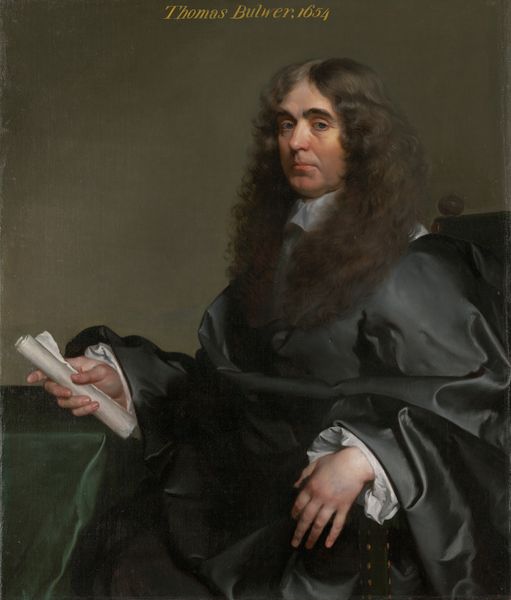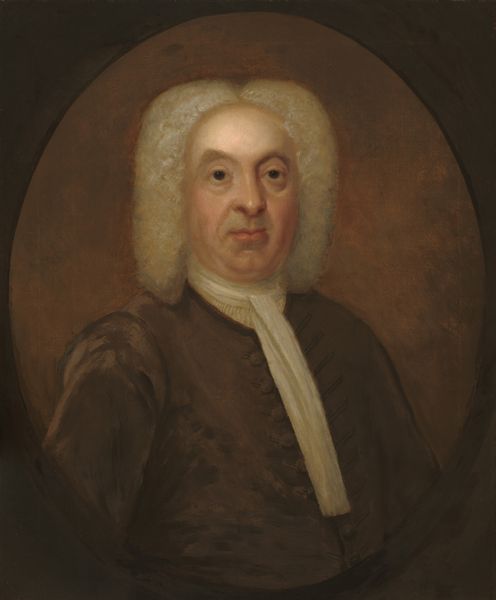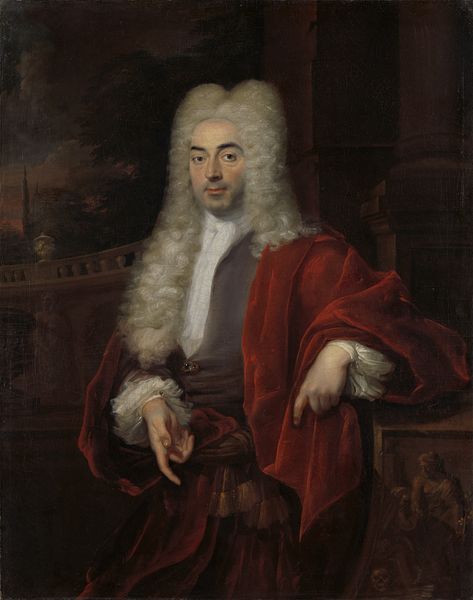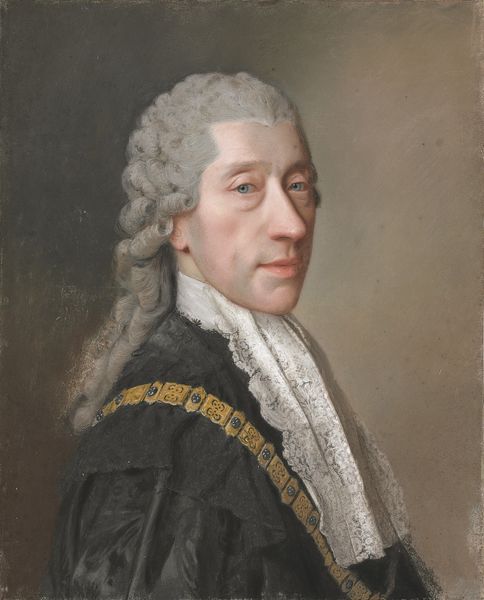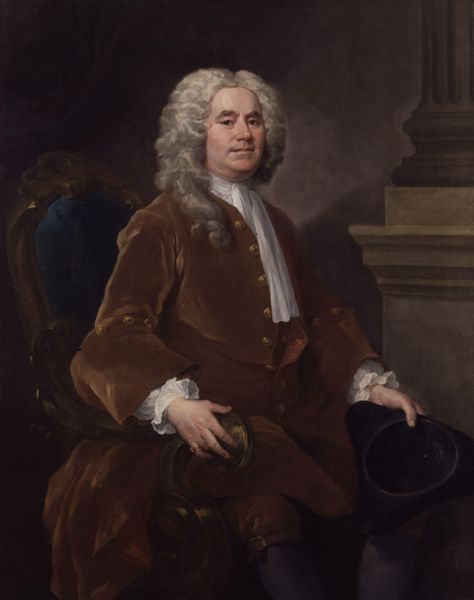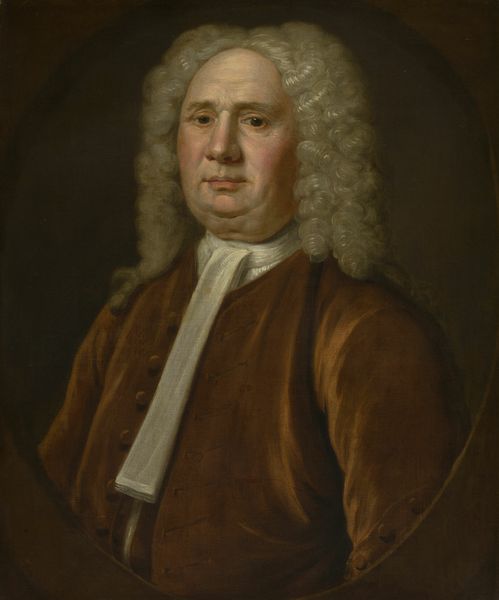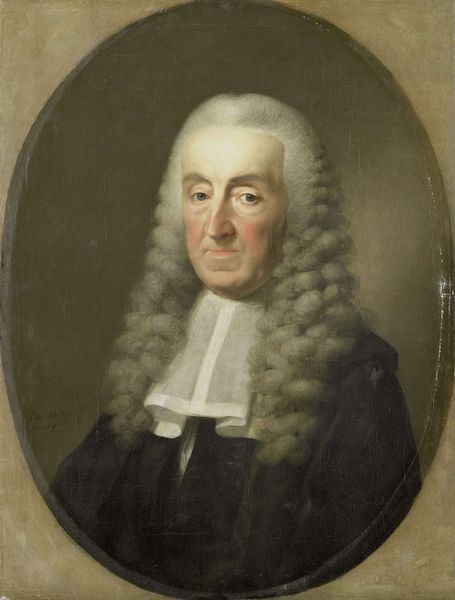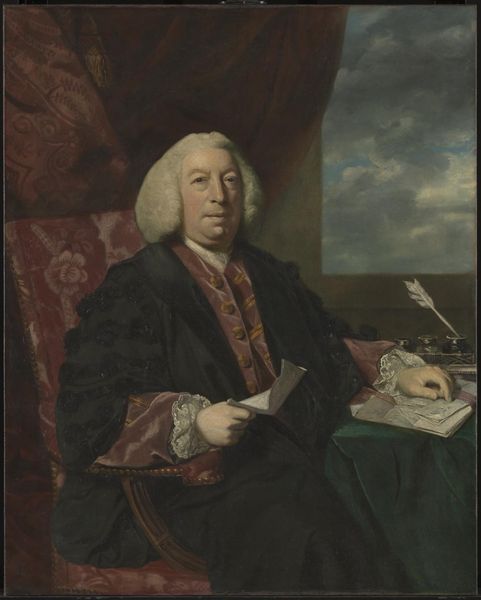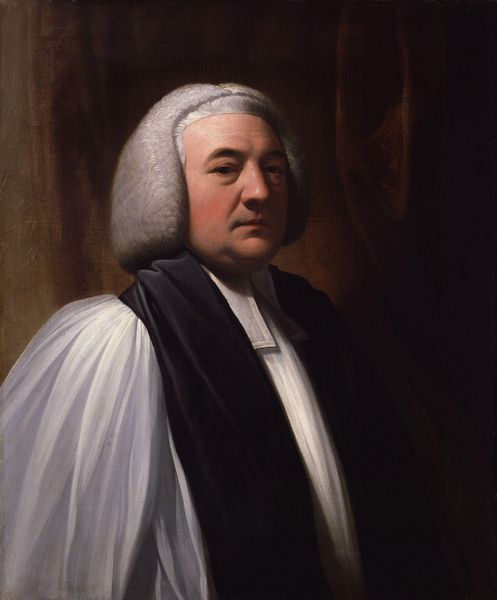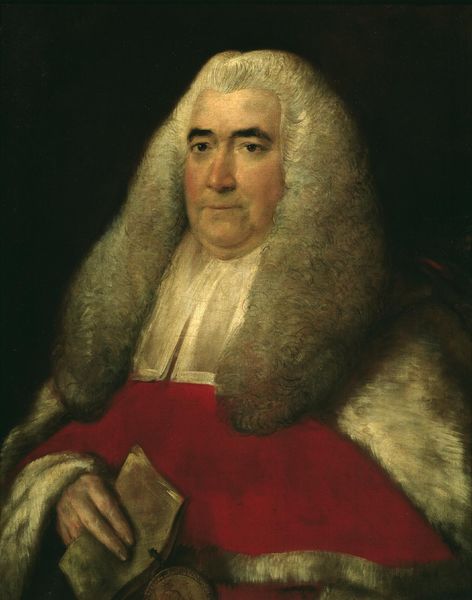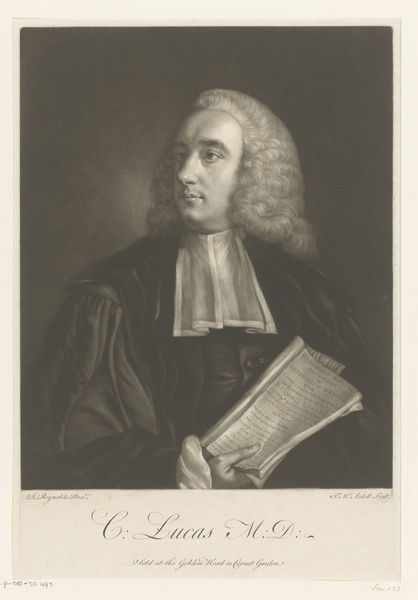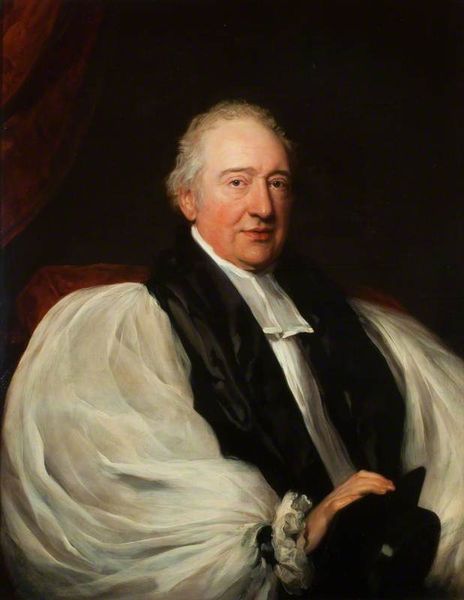
Dimensions: support: 762 x 635 mm frame: 876 x 750 x 60 mm
Copyright: CC-BY-NC-ND 4.0 DEED, Photo: Tate
Editor: Allan Ramsay's portrait of Alexander Boswell, Lord Auchinleck, captures a man of clear authority, though his expression seems somewhat reserved. What symbols might be at play here? Curator: Consider the wig, the crimson robe. They speak of a carefully constructed identity, a visual language of power. What emotions do these symbols evoke for you? Editor: I feel a sense of distance, perhaps even a hint of the theatrical. Curator: Precisely. The clothing signifies status, yes, but also distance. He is performing a role, reinforcing a hierarchy. The symbols become a barrier as much as a statement. Editor: That makes sense. I hadn't considered the idea of the performance aspect so directly tied to the symbolism. Curator: Indeed, symbols are never neutral; they actively shape our perceptions.
Comments
tate 7 months ago
⋮
http://www.tate.org.uk/art/artworks/ramsay-alexander-boswell-lord-auchinleck-t01049
Join the conversation
Join millions of artists and users on Artera today and experience the ultimate creative platform.
tate 7 months ago
⋮
Alexander Boswell (1706–82) succeeded as 8th Laird of Auchinleck, Ayrshire, Scotland, in 1749. Like his father, Boswell studied law in the Dutch city of Leiden. In 1754 he was made a Lord of Session as Lord Auchinleck, becoming a judge in the highest court in Scotland. This portrait was commissioned to mark that event and shows him wearing the traditional red judge’s robes. It was painted in Edinburgh by Allan Ramsay, the leading portrait painter in Scotland at that time. Lord Auchinleck’s eldest son was James Boswell, the companion and biographer of Dr Johnson. Gallery label, February 2016
